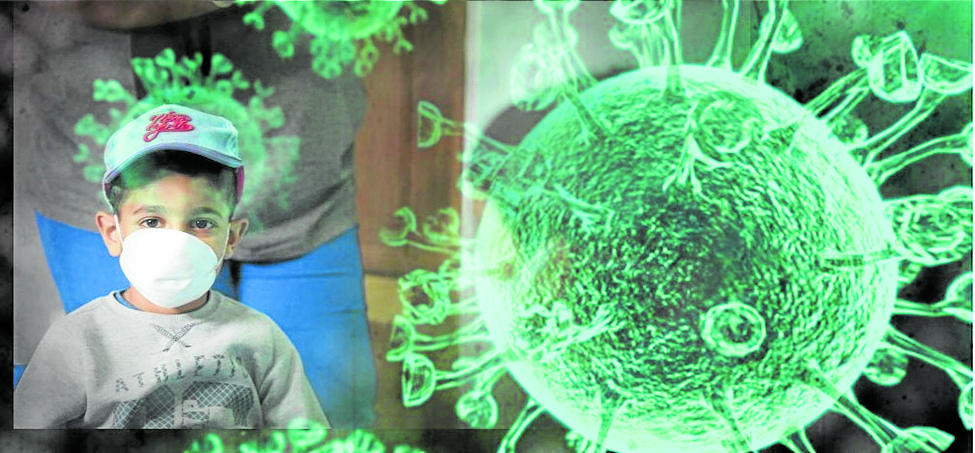
(First of two parts)
Although only a total of 43 cases of Omicron have been genomically identified as of Jan. 6, it’s fair to assume that Omicron has already displaced Delta as the dominant variant in the Philippines. Omicron should account for at least 70 percent of the cases at this time; by this weekend, at least 90 percent of our cases should be Omicron.
It has been and will still be a roller-coaster ride in the next two to three weeks for all of us in the National Capital Region (NCR) and nearby areas. The cases should peak in another 14 to 20 days, after which the numbers are likely to decrease just as rapidly as they increased.
By end of February, everything should be well and stable, except if other regions outside of NCR should catch Omicron fire as well. Otherwise, by end of February or early March, we’ll have exactly the same feeling as when we alight from the roller-coaster ride and exclaim, “That was scary but fun!”
Blessing in disguise
The scary part is sure, especially when we hit more than 40,000 cases a day, possibly more than 50,000; the fun part at the end will depend on how our health officials and the public respond to the Omicron surge. There are some pitfalls that, by the looks of it, we have a tendency to fall into, especially when fear overcomes our reasoning and decision-making.
If we have incongruous knee-jerk reactions with exaggerated responses or simply go into panic mode, then it will be scary all throughout, with a grim outcome at the end. It’s like unbuckling and wanting to get off the roller coaster in midair.
On the other hand, if we take the ride calmly and responsibly, doing only what we’re supposed to do—avoiding places, events and activities which are not necessary; buying only the types and amount of medicines we need; managing our stress and emotions—then we’ll come out of this with a big sigh of relief and consider this surge a blessing in disguise.
Why a blessing? As we explained in previous columns, the Omicron could serve as our natural mass vaccination and bring us closer to our quest for herd immunity, or at least meaningful population protection.
We’re not suggesting that we should recklessly expose ourselves to get an Omicron infection. Even the mildest of variants may turn out to be a killer for the elderly and those with multiple comorbidities.
Vulnerable individuals should still take extra care and take prophylaxis or preventive treatment. They should get the maximum of protection we could provide, which we’ve detailed previously in this space.
Once they develop symptoms that suggest COVID-19 (colds, flu-like symptoms), they should be started on treatment early while waiting for the confirmatory test results.
Low risk
This is one big lesson many of us treating COVID patients have learned in the last 22 months. Early treatment is our best bet for our high-risk patients to survive COVID-19, and we’ve wasted precious time waiting for confirmatory test results. It’s better to err on the safe side, and treat ASAP if there’s reasonable clinical indication to suspect COVID-19.
For healthy children, adolescents, young adults and those under 50 with no comorbidities, a bout of Omicron infection can very well take the place of getting two jabs and a booster, and for nearly the same very low risk of developing an adverse reaction.
We advise our patients, “Don’t hide in a cave. Do what you need to do—work, go to the supermarkets for your food and other necessities, but just take strict precautions so you don’t get a heavy load of the virus should you catch it.”
Many of them have already caught it, but in a few days, with prompt treatment, they’re back in harness.
Should they still get vaccinated, or have their booster shots? In our book, they don’t need it anymore because the natural immunity they have developed following their recent Omicron infection is like an upgraded, state-of-the-art vaccination, compliments of nature, a God-given gift. Despite some claims to the opposite, no mRNA or adenovector technology can match the type of immunity a recent Omicron infection can provide—not by any stretch of imagination.
In the last two weeks, our group has treated a few hundred patients with COVID-19, likely Omicron. In many instances, it involves the entire household, from the grandparents to the grandchildren and kasambahay. Of those we’ve treated, none required hospitalization or oxygen support and, by God’s grace, they all recovered in less than five days.
So, even if we hit more than 50,000 cases a day, there should be no health-care exhaustion, so long as the clinics and hospitals are able to manage well their outpatient and emergency room consultations.
More doctors should make themselves available, too, for teleconsultations to avoid patients crowding the hospital emergency rooms.
Well under control
With emergency rooms reported in the news to be filled with COVID patients, though more than 90 percent of them are mild, the public tends to panic, pretty much like depositors do when there’s a reported bank run. Our health and local government officials and the medical community should help to calm the public down and reassure them that everything is well under control, and there’s no need to panic.
Another pitfall we’ve observed in the early part of the surge is that mild COVID patients who could very well be managed at home are being admitted into hospitals. We’re reinforcing the fear, instead of allaying it. This could lead to artificial, avoidable health-care congestion and exhaustion.
It’s also not in the best interest of the patient with mild COVID-19 to be admitted because he or she could get hospital-acquired infections that may complicate his or her case.
Instead of just a self-limiting viral infection, one can develop hospital-acquired pneumonia or a swollen vein (phlebitis) from an intravenous line, and hospital-acquired infections could prolong one’s hospital stay, bloat the hospital bill, and lead to a poorer outcome. It doesn’t happen frequently, but we do see such cases from time to time.
Bottom line, don’t ask your doctor to admit you to the hospital unless it is really indicated by your illness, and it’s risky not to confine you.
It’s also not in the interest of the public, because hospital beds will be tied up, instead of being available to those who need them, either due to more severe COVID or some other non-COVID problems. In the previous surges, some of our patients with unstable heart problems had to be managed as outpatients because there were no available hospital beds.
Another grave pitfall we’ve fallen into with the Omicron surge is barking up the wrong tree again by looking at the unvaccinated as a potential source for the surge, and compelling them to remain in their homes unless it’s absolutely necessary to go out.
Should the unvaccinated be considered a threat to public health? Do they deserve the social pariah treatment they’re getting, unfortunately, even from the government units and agencies they expected to protect them?
(To be continued next week)











































